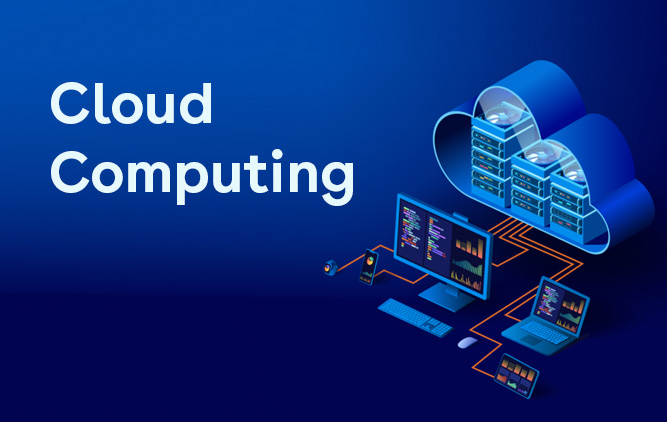Businesses are increasingly relying on cloud services in today’s fast-paced digital environment to store data, execute apps, and optimize their IT infrastructure. Although the cloud has many advantages, including scalability, flexibility, and accessibility, it can also result in unforeseen expenditures if it is not handled properly. Organizations must create cost-effective cloud architectures if they want to take advantage of cloud computing’s full potential without going bankrupt. A cloud architect course will help anyone understand this industry to its full potential. In this post, we’ll look at a variety of ideas and tactics that may be used by companies to cut costs while maximising performance and scalability while using the cloud.
Limit the Use of Resources
The allocation of resources that are far larger than necessary is one of the most prevalent cost traps in the cloud. Although there are many alternatives for computing power, storage, and other resources offered by cloud service providers, it is essential to choose the one that is the proper size for your workload. Undersizing can result in subpar performance, while oversizing might result in excessive costs.
To properly allocate your resources:
a. Keep an eye on workloads: Frequently evaluate how much resource your application is actually using. In order to learn more about CPU, memory, and storage utilization, use cloud monitoring tools.
b. Utilize auto-scaling by putting in place auto-scaling policies that automatically change the number of instances according to the workload. In this manner, you only pay for the resources you actually use.
c. Utilize cloud cost optimization tools. Several cloud service providers offer cost analysis tools that offer suggestions for resource rightsizing. Use these resources to your advantage to make wise judgments.
Consider using serverless architecture
The ability of serverless computing to cut expenses by doing away with the need to manage infrastructure has made it more and more popular. A serverless architecture only charges you for the real compute time your application consumes; the underlying servers are managed by cloud providers. This method is especially economical for applications with fluctuating workloads.
Serverless architecture has several key benefits, including:
a. Savings on fixed infrastructure costs are possible because you only pay for the computing time and resources used by your application.
b. Automatic scalability: Serverless platforms scale themselves based on demand, guaranteeing top performance without overprovisioning.
c. Reduced maintenance: Serverless systems manage infrastructure administration, patching, and upgrades, freeing your team to concentrate on application development.
Be open to using reserved instances
Reserving instances through cloud providers can result in significant cost savings versus on-demand instances. You can obtain resources at a substantially lower hourly rate by committing to a one- or three-year contract.
To use reserved instances properly:
a. Before committing to reserved instances, investigate the usage patterns of your workload to make sure it is steady enough to realize the cost savings.
b. Mix & match: To maintain flexibility while lowering costs, most cloud providers let you blend on-demand and reserved instances.
c. Pay close attention to renewal dates: Watch out for renewal dates to prevent paying for unused or superfluous reserved instances.
Implement cost allocation and resource tagging
The practice of resource tagging is crucial for cost allocation and accountability. You may keep track of charges by project, department, or any other factor important to your business by applying tags to cloud resources.
The advantages of resource tagging
a. Cost transparency: Tags make it clear which resources are responsible for what costs, making it simpler to spot areas for cost-cutting.
b. Cost distribution: Distribute cloud costs to particular projects or departments to help align cloud spending with corporate goals.
c. Opportunities for optimization: By examining tagged resources, you can identify places where budget cuts or rightsizing are required.
Utilize Spot Fleets and Spot Instances
Spot instances, a feature of Amazon Web Services (AWS), and comparable ideas on other cloud platforms offer a practical means of accessing more compute capacity for a portion of the cost of on-demand. Spot instances can drastically lower your cloud costs, but they are better suited for fault-tolerant and stateless workloads.
Tips for properly using spot instances:
a. Choosing workloads that can withstand interruptions and swiftly bounce back after instance termination is step one in identifying spot-friendly workloads.
b. Employ spot fleets to mix on-demand instances with spot instances, guaranteeing that your application has a constant supply of minimum resources.
c. Keep an eye on the spot market: Launch instances at the most economical times by keeping an eye on spot market rates.
Reduce the cost of data storage
The cost of data storage can rise quickly; therefore, it’s critical to optimize your storage options. Different storage solutions are available from cloud providers, each with a unique pricing structure. To cut down on storage costs:
a. Object storage, like Amazon S3, is appropriate for storing massive volumes of data, so use it intelligently. Transform less often accessible data to less expensive storage types by using lifecycle policies.
b. Use data compression and deduplication techniques to minimize the quantity of data kept in the cloud, which will ultimately result in a reduction in your storage expenses.
c. Assess data access patterns: Recognize how frequently data is accessed and choose the proper storage class to accommodate usage patterns, such as archive storage or rarely access.
Keep an eye on and reduce data transfer costs.
Your cloud charges may include a sizeable amount of data transmission fees, particularly if your apps often transmit data between cloud regions or with outside parties. To reduce the cost of data transfer:
a. Use content delivery networks (CDNs) to provide content closer to end consumers, which eliminates the need for lengthy data transfers.
b. Take use of peering between cloud providers: Many cloud providers allow free or inexpensive data transport between their regions or services. Utilize these peering arrangements.
c. Keep an eye on data transfer patterns. To keep tabs on data transfer prices and trends, use cloud monitoring tools. When possible, modify your architecture to reduce expensive transfers.
Budgeting and cost alerts should be used.
In your cloud environment, setting up cost alerts and budgeting is a proactive strategy to manage costs. Most cloud service providers have features that let you set spending caps and get alerts when you get close to or go over them.
How to successfully use budgets and cost alerts:
a. Create alerts for cost thresholds that, when surpassed, send warnings to the appropriate team members. a. Set up alerts for crucial thresholds.
b. Check spending against budgets: Continually check your cloud spending against the established budgets. To keep on track, make necessary adjustments to budgets.
c. Educate your team: Make sure that everyone on your team is aware of how budgets and cost alerts operate and how they can help you save money.
Adopt hybrid and multi-cloud strategies
While some businesses decide to rely just on one cloud provider, others decide to vary their cloud architecture by using multi-cloud or hybrid cloud techniques. By letting you choose the best cloud provider for each unique task and benefit from competitive pricing, this strategy can save costs.
Benefits of hybrid and multi-cloud approaches:
a. Vendor adaptability: For each workload, select the cloud provider with the best value by comparing pricing and service options.
b. Risk reduction: By utilizing a variety of cloud service providers, you can lower your risk of service interruptions and downtime.
c. Utilize third-party solutions and cloud cost management tools to monitor and manage costs across various cloud providers. c. Leverage cloud computing resources.
Permanent Cost Optimization
Cost reduction is a continuous process. Your workloads and cloud needs change as your organization does. As a result, your cloud plan should include ongoing cost minimization.
Important guidelines for ongoing cost minimization
a. Review and upgrade your architecture on a regular basis, adopting cost-effective techniques and utilizing new capabilities from your cloud provider.
b. Promote a cost-conscious culture: Make cost-effectiveness a shared duty inside your organization by fostering a culture of cost-consciousness.
c. Keep up with cloud provider updates: To choose your cloud architecture wisely, be aware of the newest products and pricing changes from your cloud provider.
Conclusion
For businesses trying to harness the benefits of cloud computing courses while staying within their budgets, designing cost-effective cloud architectures is crucial. Organizations can optimize their cloud spending by adopting serverless architecture, reserved instances, resource labeling, rightsizing resources, and other cost-cutting techniques.
Continuous monitoring and cost-saving techniques will also guarantee that cloud costs are kept in check while enabling organizations to scale and innovate successfully. Being at the forefront of cost-effective cloud architecture is a competitive advantage that can promote corporate success in an ever-evolving digital environment.
Write and Win: Participate in Creative writing Contest & International Essay Contest and win fabulous prizes.











